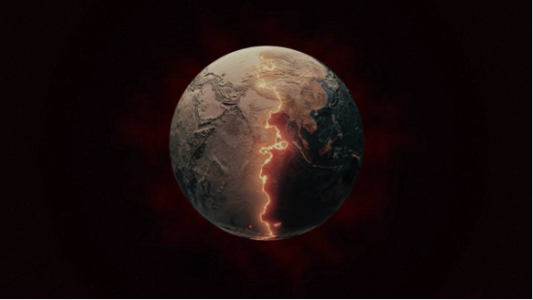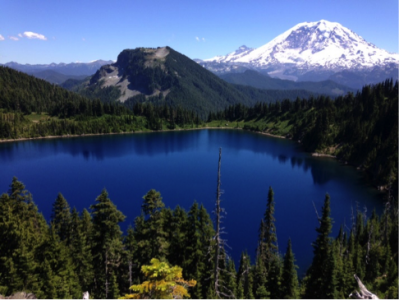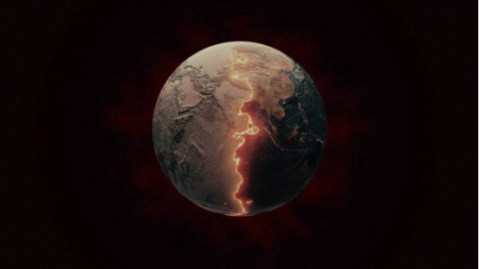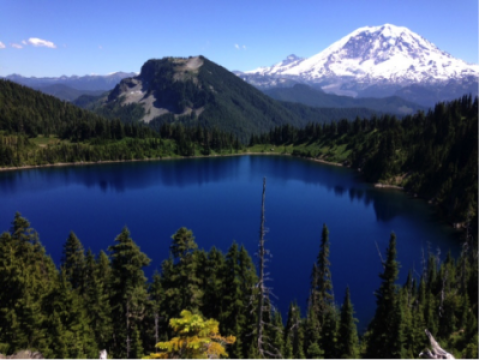Widgetized Section
Go to Admin » Appearance » Widgets » and move Gabfire Widget: Social into that MastheadOverlay zone
A Moral Reawakening: Understanding Landscape as Text
The views expressed are those of the author and do not necessarily reflect the views of ASPA as an organization.
By Tom R. Hulst
February 21, 2022

Introduction
The climate crisis, habitat disintegration and loss of biodiversity are obstinate and complicated public policy issues. Nevertheless, they pose an existential threat to our time and require a full-court press by policymakers and administrators at all levels. The Sixth Assessment Report (AR6) of the United Nations Intergovernmental Panel on Climate Change (IPCC) issued last summer, found that “Climate change is intensifying the water cycle that brings more intense rainfall as well as more intense drought in many regions. Further warming will amplify permafrost thawing, melting of glaciers and ice sheets and loss of summer Arctic-sea ice. Changes to the ocean, including warming, more frequent marine heatwaves, ocean acidification and reduced oxygen levels have been clearly linked to human influence.” A copy of the report is available here https://www.ipcc.ch/report/ar6/wg1/. These threats to the planet require dramatic changes in public administration, legal systems and morality. We will need to acquire a veneration of the earth as sacred text.
Conflict on Climate Policy
Despite the science on climate change, environmental policy has been severely conflicted. Global warming believers and deniers have battled over the science and the public policies needed to confront the issue. The policies of the last three administrations have bounced around like the ball in a pinball machine. The actions of the previous administration opened more Federal land for energy development, promoted the greatest expansion of oil and gas leasing ever proposed, revoked many environmental regulations, withdrew the United States from climate agreements and endorsed policies to reverse the nation’s auto efficiency and emission standards.
In contradistinction, the new administration has attempted to enact new climate policies as part of the Build Back Better Framework’s $555 billion investment. The initiatives would greatly impact construction, transportation, industry, electricity and agricultural practices throughout the economy. The framework, according to the administration, “will set the United States on course to meet its climate targets, achieving a 50-52% reduction in carbon emissions below 2005 levels in 2030 that grows domestic industries — and advances environmental justice.”
Landscape as Text
A consensus on science and policy solutions has not been forthcoming. What is needed to confront the existential menace posed by global warming is a transformative moral reawakening—a renaissance that treats the mountains as hallowed trust, the waters as the revered source of all life and the landscape as sacred text. Ronald Dworkin, in his work Freedom’s Law, called for a moral reading of constitutional text. Veneration of written text—legal writ and holy scripture, for example—is widely accepted, but the application of this idea to landforms is relatively new. We need a similar moral reading of the textual contours of our landscapes.

The first peoples of the world have demonstrated this devotion to nature, story and text for eons. The Agikuyu people, for example, are a Bantu speaking community whose ancestral home is on the slopes of Mount Kenya. According to Michael Wainaina, Land as Story and the Place of Story, “It was the place of the settling of the original family. Its significance goes beyond a land claim to include a spiritual and moral place where [humans], land and God commune and provides deep meaning to the textual importance of the landscape.” In her chapter on “Allegiance to Gratitude” in Braiding Sweetgrass, Robin Wall Kimmerer describes a Thanksgiving Address of the Onondaga Nation of New York in which the children express their gratitude for nature’s text: “We give thanks for all the waters of the world for quenching our thirst; when we look about us we see that the berries are still here; now we turn to the medicine herbs of the world. They are always waiting and ready to heal us.”
Veneration and Respect for the Earth
Modern day thought leaders taught us how to venerate landscapes as sacred texts. In 1909, John Muir famously wrote in Three Days with John Muir, The World’s Work, that, “Down beneath these miles of snow the ice is shifting, grinding, slicing, leveling, making a sierra here, a broad valley there, scooping out a Yosemite, polishing boulders and marking rock ledges with the handwriting of God, (emphasis by the author). In 1965, Justice William O. Douglas in A Wilderness Bill of Rights, wrote, “An outdoor teaching area is priceless to botanists, biologists, ornithologists. A wilderness is a living library, richer in many respects than a library filled with books.” In his final book, The Great Work, Thomas Berry called on human society to enter a new covenant with nature; and in 2020, David Attenborough writes in A Life on Our Planet, that “to create a stable and healthy world, it is biodiversity that we ought to be cherishing. “
The earth and its wisdom are holy script and speak to us morally, as constitutions, court decisions and statutes do. This wisdom calls out public administrators to support initiatives that revere the textual significance of geographical landscapes embedded in the narratives of original peoples throughout the planet.
Author: Tom R. Hulst received an MA in public administration from Washington State University, was policy advisor to Washington Governor Daniel J. Evans, administrator in the State Office of Public Instruction, and superintendent of Peninsula School District. He published The Footpaths of Justice William O. Douglas in 2004, been a long-time ASPA member, and currently teaches politics at Tacoma Community College.






 (2 votes, average: 4.50 out of 5)
(2 votes, average: 4.50 out of 5)
Mike Hiler
February 23, 2022 at 12:36 am
There is a lot here to mull over. Your thesis is clear, but I wonder if we also need some new definitions? Could you say it this way: Nature is text for a new constitution of the human condition? Then come up with words that are inclusive instead of exclusive. Yes, native traditions show us a way to the future but does that let the rest of us off the hook,,, I hope not. WE all have obligations to step. up to man made problems. And we all come from important traditions that need better understanding.
Nature as text and context?